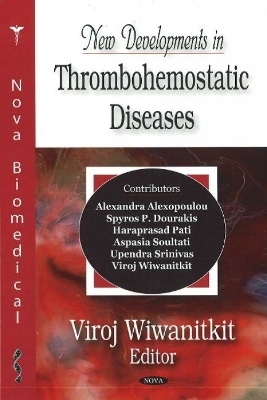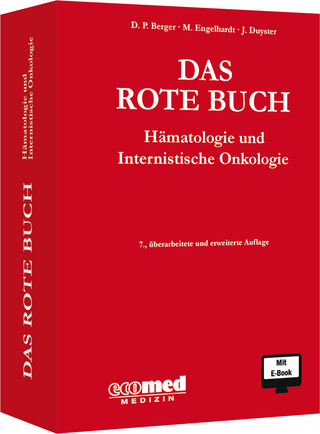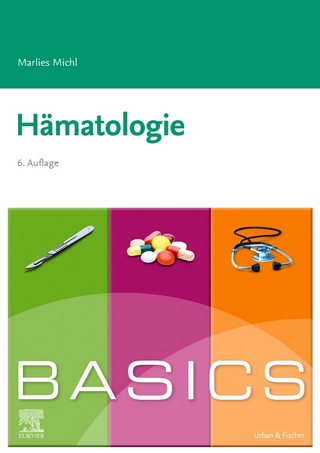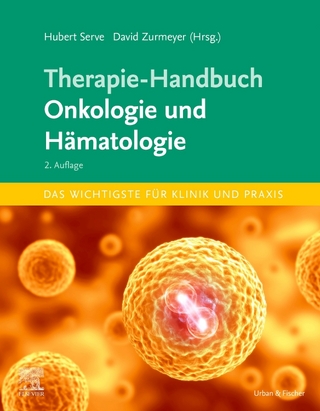
New Developments in Thrombohemostatic Diseases
Seiten
2007
Nova Science Publishers Inc (Verlag)
978-1-60021-495-0 (ISBN)
Nova Science Publishers Inc (Verlag)
978-1-60021-495-0 (ISBN)
Provides a review of the coagulation profile in acute liver failure, liver cirrhosis, autoimmune cholestatic, viral and various hepatic diseases. This book also reviews diagnostic and therapeutic modalities in coagulation defects in liver diseases.
There are two dominant aspects which conclude the coagulation cascade: the importance of the tissue factor pathway in initiating clotting and the interaction between pathways. Two main pathways are recognised the extrinsic and the intrinsic. At the side of vascular injury endothelial cells are converted in a pro-thrombotic state or become detached to exposed circulating blood to thrombogenic constituents of the sub-endothelial matrix. Activation of platelets and formation of fibrin occur simultaneously and interdependently to effect haemostasis. The activated platelets express the receptor GPIb-IX-V complex that further strengthens the adhesion by linking to von Willebrand factor expressed on the sub-endothelial matrix. A platelet monolayer which covers the injured area recruits and aggregates activated platelets to form a platelet plug by linking to fibrinogen molecules. Activation of a series of inactive precursors leads to the formation of thrombin that cleaves fibrinogen to fibrin. The sequence of reactions interacting between factor X represents the common pathway of coagulation. Factor X can be activated in turn by either the tissue factor pathway or the contact activation pathway of coagulation, which is initiated by the complex of tissue factor and factor VIIa. The latter involves a series of zymogen protease reactions that are initiated by contact activation of factor XII to XIIa. As the haemostatic process starts, a series of inhibitory mechanisms is activated involving antithrombin III, protein C, protein S, the tissue factor pathway inhibitors 1 and 2 and platelet inhibitors (prostaglandin I2, nitric oxide). Fibrinolytic mechanisms assure the clot's remodelling and elimination in the prospect of restoring the vessels patency. During the fibrinolytic process plasmin cleaves polymerised fibrin to fibrin degradation products. The liver plays a predominant role in the regulation of haemostasis. By producing most clotting factors (except tissue factor TF) and inhibitors (antithrombin III, protein C, protein S, C1 inhibitor), as well as a number of the proteins involved in fibrinolysis (plasminogen, a2-antiplasmin), and by clearing from the bloodstream activated enzymes involved in clotting or fibrinolysis, the liver protects against both bleeding and overwhelming activation of coagulation. There is a common bleeding profile emerging in the overwhelming majority of liver diseases. The severity of documented coagulation disorders varies analogically to the degree of the hepatocellular injury. The importance of the coagulopathy is underlined by the incorporation of the coagulation parameters into prognostic scores assessing fulminant hepatic failure and cirrhosis. The purpose of this book is to review the coagulation profile in acute liver failure, liver cirrhosis, autoimmune cholestatic, viral and various hepatic diseases. Diagnostic and therapeutic modalities in coagulation defects in liver diseases are also reviewed.
There are two dominant aspects which conclude the coagulation cascade: the importance of the tissue factor pathway in initiating clotting and the interaction between pathways. Two main pathways are recognised the extrinsic and the intrinsic. At the side of vascular injury endothelial cells are converted in a pro-thrombotic state or become detached to exposed circulating blood to thrombogenic constituents of the sub-endothelial matrix. Activation of platelets and formation of fibrin occur simultaneously and interdependently to effect haemostasis. The activated platelets express the receptor GPIb-IX-V complex that further strengthens the adhesion by linking to von Willebrand factor expressed on the sub-endothelial matrix. A platelet monolayer which covers the injured area recruits and aggregates activated platelets to form a platelet plug by linking to fibrinogen molecules. Activation of a series of inactive precursors leads to the formation of thrombin that cleaves fibrinogen to fibrin. The sequence of reactions interacting between factor X represents the common pathway of coagulation. Factor X can be activated in turn by either the tissue factor pathway or the contact activation pathway of coagulation, which is initiated by the complex of tissue factor and factor VIIa. The latter involves a series of zymogen protease reactions that are initiated by contact activation of factor XII to XIIa. As the haemostatic process starts, a series of inhibitory mechanisms is activated involving antithrombin III, protein C, protein S, the tissue factor pathway inhibitors 1 and 2 and platelet inhibitors (prostaglandin I2, nitric oxide). Fibrinolytic mechanisms assure the clot's remodelling and elimination in the prospect of restoring the vessels patency. During the fibrinolytic process plasmin cleaves polymerised fibrin to fibrin degradation products. The liver plays a predominant role in the regulation of haemostasis. By producing most clotting factors (except tissue factor TF) and inhibitors (antithrombin III, protein C, protein S, C1 inhibitor), as well as a number of the proteins involved in fibrinolysis (plasminogen, a2-antiplasmin), and by clearing from the bloodstream activated enzymes involved in clotting or fibrinolysis, the liver protects against both bleeding and overwhelming activation of coagulation. There is a common bleeding profile emerging in the overwhelming majority of liver diseases. The severity of documented coagulation disorders varies analogically to the degree of the hepatocellular injury. The importance of the coagulopathy is underlined by the incorporation of the coagulation parameters into prognostic scores assessing fulminant hepatic failure and cirrhosis. The purpose of this book is to review the coagulation profile in acute liver failure, liver cirrhosis, autoimmune cholestatic, viral and various hepatic diseases. Diagnostic and therapeutic modalities in coagulation defects in liver diseases are also reviewed.
Preface; Coagulation Disorders in Liver Diseases; Platelet Transfusion; Prothrombin Deficiency; Thrombohemostatic Disorder in HIV Infection; Thrombohemostatic Disorder in Nutrition Deficiency; Update in Haemophilia; Non Dengue Mosquito-Borne Viral Hemorrhagic Fever; Thrombotic Disorders, the Indian Scenario(in a Sub-Tropical Country); Eclampsia, A Thrombohemostatic Disease; Newborn Bleeding, Breastmilk and Vitamin K Supplementation; Pulmonary Thromboembolism; Megakaryocytic Leukaemia; Update in Cerebrovascular Thrombohemostatic Disorder; Thrombohemostatic Disorder in Systemic Lupus Erythrematosus; Psuedohemophilia; Index.
| Erscheint lt. Verlag | 20.11.2007 |
|---|---|
| Zusatzinfo | Illustrations |
| Verlagsort | New York |
| Sprache | englisch |
| Maße | 260 x 180 mm |
| Gewicht | 530 g |
| Themenwelt | Medizinische Fachgebiete ► Innere Medizin ► Hämatologie |
| ISBN-10 | 1-60021-495-9 / 1600214959 |
| ISBN-13 | 978-1-60021-495-0 / 9781600214950 |
| Zustand | Neuware |
| Haben Sie eine Frage zum Produkt? |
Mehr entdecken
aus dem Bereich
aus dem Bereich
Hämatologie und Internistische Onkologie
Buch | Softcover (2023)
ecomed-Storck GmbH (Verlag)
129,99 €
Buch | Softcover (2024)
Urban & Fischer in Elsevier (Verlag)
54,00 €


